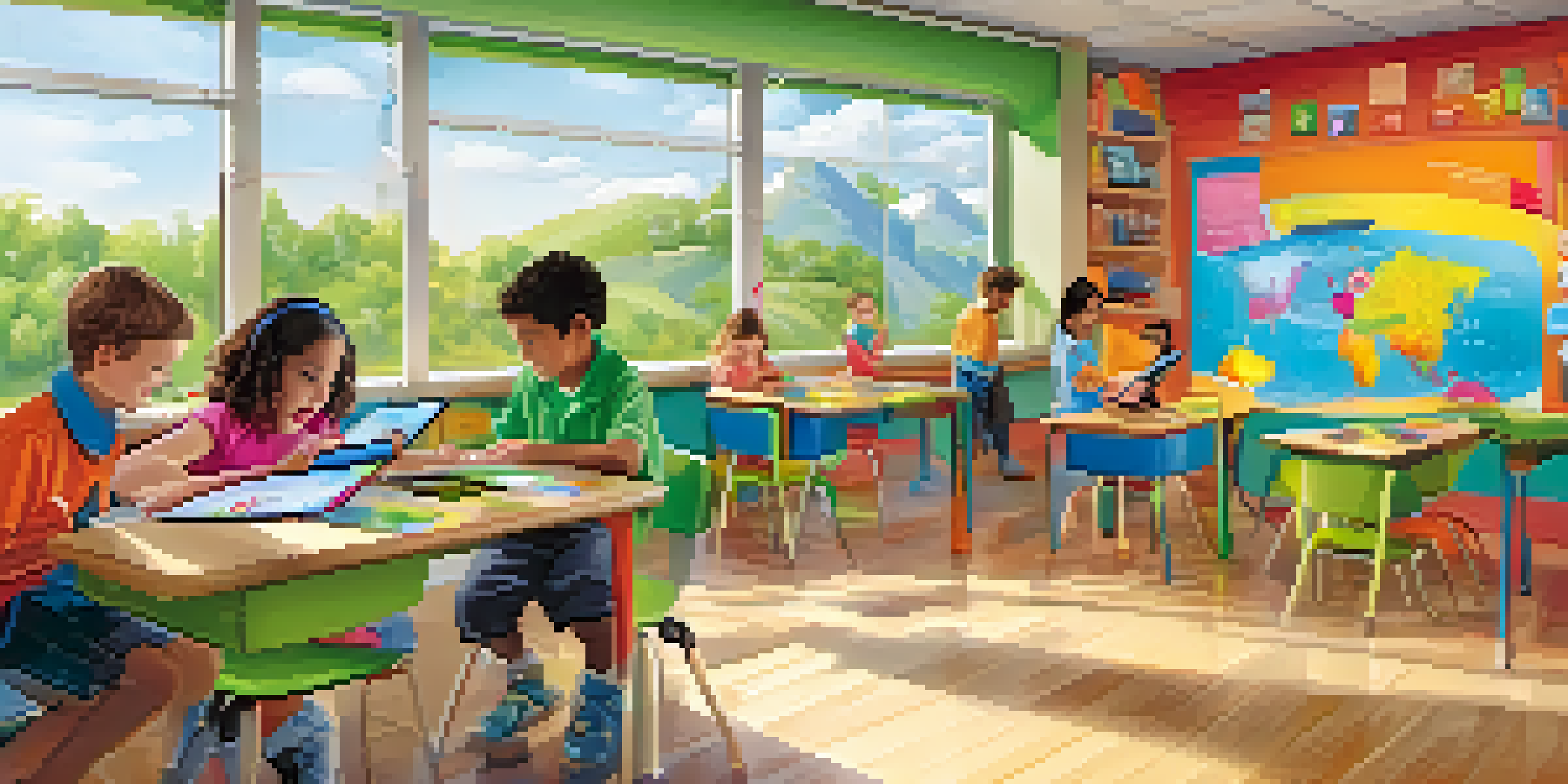Using Technology Wisely in Early Childhood Classrooms

Understanding the Role of Technology in Early Learning
In today's digital age, technology plays a significant role in education, even for our youngest learners. It can enhance engagement and foster creativity, making learning more enjoyable. However, it's crucial to understand that technology should complement traditional teaching methods, not replace them.
Technology is best when it brings people together.
When used wisely, technology opens up a world of resources that can enrich the curriculum. For instance, interactive apps can help children practice their literacy and math skills in an entertaining way. This blend of play and learning reflects the natural curiosity of young children.
Ultimately, the goal is to create a balanced classroom environment where technology serves as a tool for exploration and discovery. This approach encourages children to tap into their digital skills while still enjoying hands-on activities and social interaction.
Choosing the Right Technology for Young Learners
Selecting appropriate technology for early childhood classrooms requires careful consideration. Look for tools that promote active engagement and are age-appropriate. For example, educational games that encourage problem-solving can be beneficial.

It's also essential to prioritize quality over quantity. A few well-chosen resources can be much more effective than a plethora of options that overwhelm young learners. Engaging storytelling apps or interactive videos can spark interest while reinforcing key concepts.
Technology Enhances Learning
When used wisely, technology complements traditional methods, enriching the learning experience for young children.
Moreover, evaluating technology based on its educational value is crucial. Always ask yourself how a specific tool aligns with learning objectives and contributes to the children's overall development.
Integrating Technology with Early Childhood Curriculum
Integrating technology into the existing curriculum can enhance learning experiences. For example, teachers can use tablets to document children's progress through photos and videos, making assessments more dynamic. This visual evidence can also be shared with parents to keep them involved.
The only way to do great work is to love what you do.
Moreover, technology can support collaborative projects. Children can work together on digital storytelling, where they create stories using images and text, fostering teamwork and communication skills. This not only makes learning fun but also prepares them for future group dynamics.
When technology is woven seamlessly into the curriculum, it becomes a natural part of the learning process. This integration encourages children to explore their interests and express their creativity while developing essential skills.
Setting Boundaries for Technology Use
While technology can be a powerful tool, it's crucial to set boundaries for its use in early childhood classrooms. Establishing screen time limits ensures that children engage with technology without becoming overly reliant on it. The American Academy of Pediatrics suggests no more than one hour of high-quality programming for children aged 2 to 5.
In addition to time limits, it's important to monitor the content children are accessing. Educators should guide learners towards age-appropriate and educational resources. This proactive approach helps create a safe digital environment.
Choosing Quality Over Quantity
It's essential to select age-appropriate technology that promotes engagement and aligns with educational objectives.
By setting clear boundaries, teachers can help children develop healthy technology habits from an early age. This not only fosters a balanced learning experience but also prepares them for a world where technology is ever-present.
Encouraging Active Participation with Technology
One of the key benefits of using technology in early childhood education is its ability to foster active participation. Interactive tools encourage children to engage directly with content, rather than passively consuming it. For instance, using touch screens can enhance fine motor skills while making learning fun.
Moreover, educators can facilitate discussions about technology usage, prompting children to think critically about what they are learning. This dialogue helps kids understand the purpose behind the tools they are using and encourages them to ask questions.
Encouraging active participation not only enhances learning but also builds confidence. As children take ownership of their learning experiences, they develop essential skills that will serve them well throughout their educational journey.
Fostering Digital Citizenship in Early Learners
As technology becomes an integral part of education, teaching digital citizenship is essential for young learners. This involves educating children about online safety, respect, and responsible use of technology. Even at a young age, children can learn the importance of protecting personal information.
Interactive activities can help illustrate these concepts in a relatable way. For example, role-playing scenarios can teach children how to interact kindly online and recognize inappropriate content. These lessons lay the groundwork for responsible digital behavior as they grow older.
Fostering Digital Citizenship
Teaching young learners about online safety and responsible technology use is crucial for their development as digital citizens.
Fostering digital citizenship helps children become informed and responsible users of technology. By instilling these values early on, educators can contribute to the development of conscientious digital citizens for the future.
Assessing the Impact of Technology on Learning Outcomes
To ensure that technology is effectively enhancing learning, educators need to assess its impact on children's development. This can be done through regular observations and assessments that focus on both academic progress and social skills. By keeping track of how technology influences learning outcomes, teachers can make informed adjustments.
Additionally, gathering feedback from children can provide valuable insights. Asking them about their experiences with technology helps educators understand what works and what doesn't. This ongoing dialogue fosters a responsive learning environment.

Ultimately, evaluating the impact of technology on learning outcomes empowers educators to refine their approaches. By continuously adapting their strategies, they can maximize the benefits of technology in early childhood education.